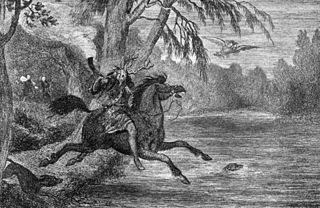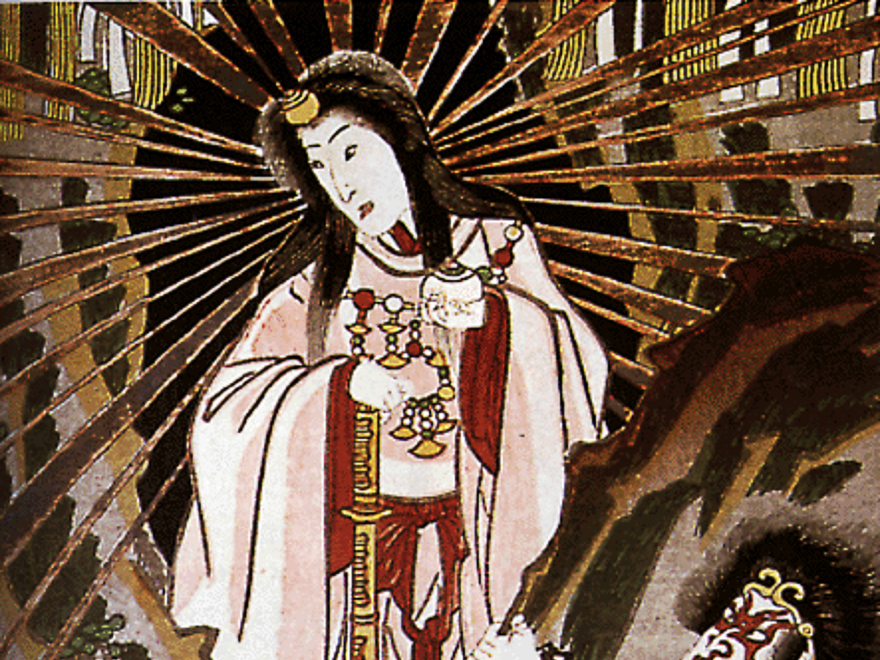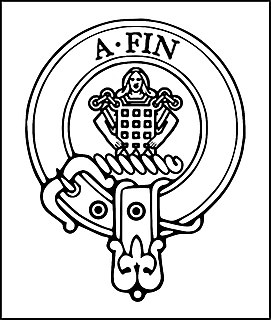Related Research Articles

In folklore, a ghost is the soul or spirit of a dead person or animal that can appear to the living. In ghostlore, descriptions of ghosts vary widely from an invisible presence to translucent or barely visible wispy shapes, to realistic, lifelike forms. The deliberate attempt to contact the spirit of a deceased person is known as necromancy, or in spiritism as a séance. Other terms associated with it are apparition, haunt, phantom, poltergeist, shade, specter or spectre, spirit, spook, and wraith.

In English folklore, Herne the Hunter is a ghost associated with Windsor Forest and Great Park in the English county of Berkshire. He is said to have antlers growing from his head, ride a horse, torment cattle, and rattle chains. The earliest mention of Herne comes from William Shakespeare's 1597 play The Merry Wives of Windsor, and it is impossible to know how accurately or to what degree Shakespeare may have incorporated a real local legend into his work, though there have been several later attempts to connect Herne to historical figures, pagan deities, or ancient archetypes.

Earl of Airlie is a title of the peerage in Scotland created on 2 April 1639 for James Ogilvy, 7th Lord Ogilvy of Airlie, along with the title “Lord Ogilvy of Alith and Lintrathen.” The title “Lord Ogilvy of Airlie” was then been created on 28 April 1491.

Yūrei (幽霊) are figures in Japanese folklore analogous to the Western model of ghosts. The name consists of two kanji, 幽 (yū), meaning "faint" or "dim" and 霊 (rei), meaning "soul" or "spirit". Alternative names include 亡霊, meaning ruined or departed spirit, 死霊 meaning dead spirit, or the more encompassing 妖怪 or お化け. Like their Chinese and Western counterparts, they are thought to be spirits barred from a peaceful afterlife.
David George Coke Patrick Ogilvy, 8th Earl of Airlie, is a Scottish peer.

A ghost story may be any piece of fiction, or drama, that includes a ghost, or simply takes as a premise the possibility of ghosts or characters' belief in them. The "ghost" may appear of its own accord or be summoned by magic. Linked to the ghost is the idea of "hauntings", where a supernatural entity is tied to a place, object or person. Ghost stories are commonly examples of ghostlore.

Yotsuya Kaidan (四谷怪談), the story of Oiwa and Tamiya Iemon, is a tale of betrayal, murder and ghostly revenge. Arguably the most famous Japanese ghost story of all time, it has been adapted for film over 30 times and continues to be an influence on Japanese horror today. Written in 1825 by Tsuruya Nanboku IV as a kabuki play, the original title was Tōkaidō Yotsuya Kaidan. It is now generally shortened, and loosely translates as Ghost Story of Yotsuya.

Mabell Frances Elizabeth Ogilvy, Countess of Airlie was a British courtier and author.

Banchō Sarayashiki is a Japanese ghost story (kaidan) of broken trust and broken promises, leading to a dismal fate. Alternatively referred to as the sarayashiki tradition, all versions of the tale revolve around a servant, who dies unjustly and returns to haunt the living. Some versions take place in Harima Province or Banshū (播州), others in the Banchō (番町) area in Edo.

Clan Ogilvy/Ogilvie is a Scottish clan. The Ogilvy family originate in Angus, Scotland. Gillebride, Earl of Angus, received a Barony from King William the Lion in 1163 and bestowed the lands of Ogilvy upon his son Gilbert. Of this extraction, Patrick de Ogilvy later swore fealty to the Hammer of the Scots and appears on the Ragman Rolls of 1296. His son Sir Patrick Ogilvie in turn received a charter from Robert the Bruce for the lands of Kettins. In 1491, King James IV elevated Sir James Ogilvy to the ranks of the peerage as Lord Ogilvy of Airlie.

A White Lady is a type of female ghost, typically dressed in a white dress or similar garment, reportedly seen in rural areas and associated with local legends of tragedy. White Lady legends are found in many countries around the world. Common to many of these legends is an accidental death, murder, or suicide, and the theme of loss, betrayal by a husband or fiance, and unrequited love.

A black dog is a motif of a spectral or demonic entity found primarily in the folklore of the British Isles. The black dog is essentially a nocturnal apparition, in some cases a shapeshifter, and is often said to be associated with the Devil or described as a ghost or supernatural hellhound. Its appearance was regarded as a portent of death. It is generally supposed to be larger than a normal dog and often has large glowing eyes. It is sometimes associated with electrical storms and also with crossroads, places of execution and ancient pathways.

Elliott O'Donnell was an author known primarily for his books about ghosts. He claimed to have seen a ghost, described as an elemental figure covered with spots, when he was five years old. He also claimed to have been strangled by a mysterious phantom in Dublin.

50 Berkeley Square is a reportedly haunted townhouse on Berkeley Square in Mayfair, Central London. In the late 19th century it became known as one of the most haunted houses in London, with its attic room said to be haunted by the spirit of a young woman who had committed suicide there.

Wilhelmina FitzClarence, Countess of Munster was a British peeress and novelist. Her mother, Lady Augusta FitzClarence, was an illegitimate daughter of William IV of the United Kingdom; Wilhelmina, also known as Mina, was born the day after William's succession as monarch. She travelled as a young girl throughout Europe, visiting the courts of France and Hanover. In 1855, Mina married her first cousin William FitzClarence, 2nd Earl of Munster; they would have nine children, including the 3rd and 4th Earls of Munster.

In mythology and folklore, a vengeful ghost or vengeful spirit is said to be the spirit of a dead person who returns from the afterlife to seek revenge for a cruel, unnatural or unjust death. In certain cultures where funeral and burial or cremation ceremonies are important, such vengeful spirits may also be considered as unhappy ghosts of individuals who have not been given a proper funeral.
References
- 1 2 3 Cheung, Theresa (2006). The Element Encyclopedia of the Psychic World. Harper Element. p. 173. ISBN 978-0-00-721148-7.
- 1 2 3 Elliott O'Donnell (1928). Confessions of a Ghost Hunter. London: Butterworth. pp. 116–.
- ↑ Raymond Lamont-Brown (1975). Phantom soldiers. Drake Publishers. ISBN 978-0-87749-777-6 . Retrieved 24 July 2011.
- ↑ Elliott O'Donnell (May 2003). Scottish Ghost Stories. Kessinger Publishing. pp. 120–. ISBN 978-0-7661-5909-9 . Retrieved 24 July 2011.
- ↑ Whichelow, Clive (June 15, 1997). "101 Ghostly Outings". The People. pp. 31–32.
- ↑ The New law journal. Butterworth. 2000. Retrieved 24 July 2011.